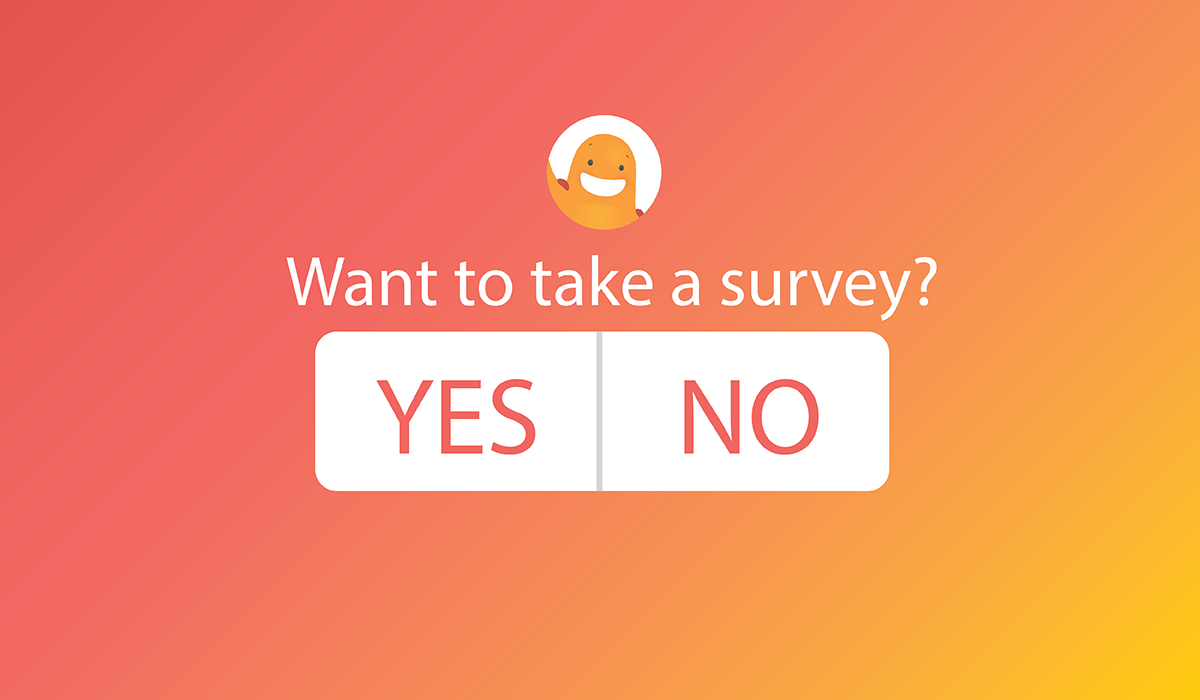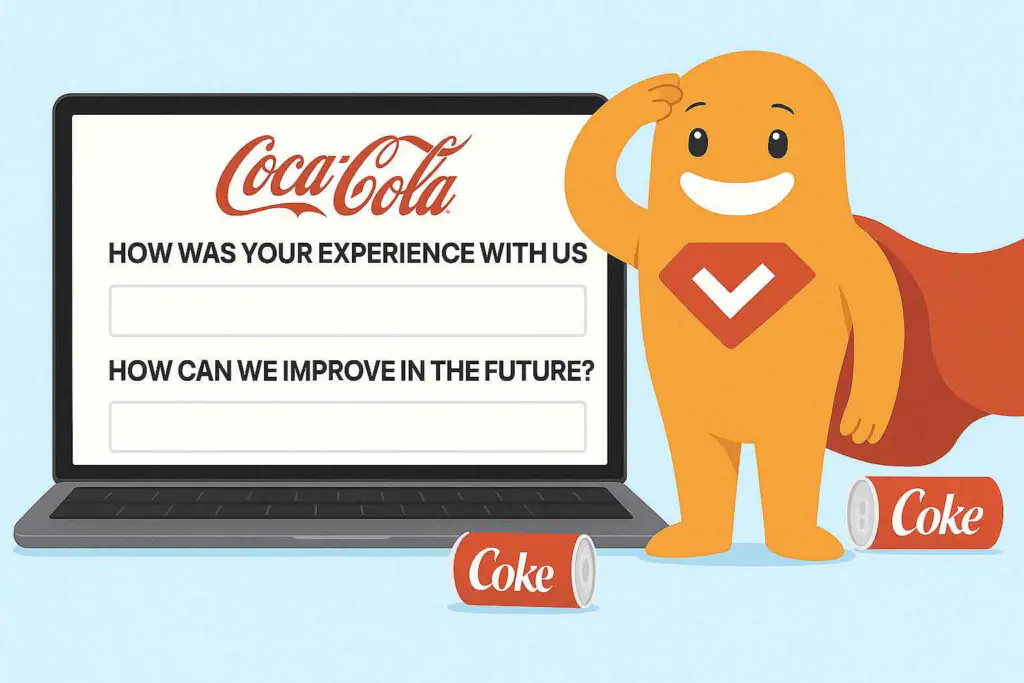Whether you’re active on social media or actively dislike it, its power cannot be denied – especially when it comes to social media surveys. Today, more than 3.5 billion people are using social media worldwide, a number projected to increase to almost 4.5 billion in 2025. This makes social media extremely important to marketers, who are always looking to gauge the pulse of their customers. It also makes social media a great place for survey interaction!
Create your social media survey, form, or poll now!
Why You Should Use a Social Media Survey
Now that you know about the popularity of social media, let’s put a little perspective on these numbers, looking at the top five sites for polling or surveying audiences.
The social media giant boasts over 2.7 billion monthly active users worldwide. You can combine the populations of the United States, China, Mexico, Canada, and all of Europe and you still won’t match the number of Facebook members! This makes the site a must-have marketing tool for surveying.
Often, we hear about Twitter faux pas – companies, celebrities, politicians, and everyday people posting things they probably shouldn’t on the platform. But with more than 330 million users, Twitter has a mighty wide reach! By taming your tweets and focusing on surveys, Twitter can really be a boon for your business.
With more of a professional focus, Linkedin can be a great place to demonstrate your company’s knowledge, credibility, and leadership; it’s also a great place to survey for B2B feedback! There are more than 760 million users on LinkedIn, and almost half of them engage with the site on a daily basis, it’s a great place to turn to for social media surveys.
With over 1 billion users (and especially popular in the United States, India, and Brazil), Instagram is one of today’s top social media sites. It’s a very visual medium (so image-based surveys are ideal). Often thought of as “social media for students,” it is the preferred social network of Millennials (1981-1995) and Gen Z (1996-2010), making it a must-have marketing tool for reaching those elusive younger markets.
This visual bookmarking platform, which allows users to “pin” items of “interest” (get it?) currently has just over 440 million monthly active users. The site now allows polling, so it’s another avenue for marketers and researchers to explore when developing a social media survey strategy.
How to Use a Social Media Survey
A social media survey is a convenient and inexpensive way to get in touch with customers and non-customers alike (if you’re lucky, it can help convert those non-customers as well). Of course, you don’t want to be running surveys all the time, or else they’ll become annoying and people will tune them out. However, there are some key times when you’ll want to consider using a social media survey interaction. Here’s how you should be using social media surveys.
1. For Collecting Customer Feedback
Social media can be a blessing or a curse for most companies, as it tends to be where customers offer recommendations or air their grievances. Since people tend to be so vocal on social media, it’s also a great place to gauge how you’re doing with a customer satisfaction survey.
A social media customer satisfaction survey gives you real-time insight into what your customers think about your company, product, or service that you can quickly act on.
Learn more: Why You Need To Conduct Customer Satisfaction Surveys
2. For Measuring Customer Experience
This goes hand-in-hand with collecting customer experience, however, it goes deeper than that. Customer experience (CX) questions on a social media survey should consist of all touchpoints in the company/customer relationship, from the customer’s initial interaction in-store or online, to usage of the product/service, to any after purchase follow-up and support.
Understanding CX gives you insight into customer loyalty, brand perception, areas for improvement, and more.
Learn more: 5 Reasons to Conduct a Customer Experience Survey
3. For Collecting Market Research
Sometimes, it’s not all about your company, product, or service – it also helps to understand the market in general. The occasional social media survey can help keep your finger on the pulse of the industry by finding out where, why, and how customers are buying products in your market. This can also help uncover new opportunities by identifying gaps, and alert marketers to the changing demands of consumers so they can prepare for expansion or adjust to keep up.
Learn more: How to Do Market Research (Even During COVID)
4. For Capturing Demographic Information
Marketers’ assumptions about their audience aren’t always correct. Plus, it’s difficult to position a product or service when you’re not sure who your customer is! By conducting social media surveys that collect demographic information such as gender, age, location, and education and income level, you can better shape not just your social media strategy but your entire brand image.
For example, perhaps you thought your eco-friendly clothing line would appeal to hip, young urbanites… only to learn it’s most popular amongst the older rural demographic because of how comfortable it is! Social media surveys can discover insights like this.
Learn more: 5 Excellent Reasons to Ask Survey Screening Questions
5. For Engaging with Followers
How frequently you post on social media depends on a number of factors. Hubspot reveals that in general, businesses post 1-6 times per week. If you’re on the high end of that spectrum, continually coming up with fresh content can be difficult (and perhaps expensive). The occasional social media survey can be a quick and easy way to add variety to your posts and up your engagement level with your audience.
Engaging surveys don’t have to be anything Earth-shattering; they can be more like a poll. For example, an ice cream shop could ask “Vanilla, Chocolate, or Strawberry?” in a survey format just for fun (hey, it could provide some insight on what to stock up on, too). Or, a company could send a quiz in a survey format that pertains to their industry, something such as “Which celebrity is quoted as saying the following…” to test your customer’s awareness of different things. The options are limitless.
For quick, engaging surveys such as this, image-based surveys are ideal. Learn more: Image-based Surveys, Forms, Polls, and Questionnaires
8 Benefits of a Social Media Survey
Conducting your surveys through social media offers a wealth of benefits. Here are our top eight reasons why you should use this type of survey:
1. Cost-Effectiveness
A social media survey is free, or very inexpensive. Especially when you consider the comparative costs of in-person interviews (interviewee plus potential travel expenses), telephone surveys (interviewee plus phone calls), and mail surveys (printing and postage).
2. Ease of Administration
One or more social media surveys can be plugged in and sent or scheduled to be sent at certain times. There’s no need to send thousands of mail-in surveys or emails to different addresses, log thousands of phone calls, etc. Just set it and forget it.
3. Far Audience Reach
Social media surveys are not limited by geography; companies in one country can easily connect with consumers in another country simply by targeting individuals in their target areas.
4. Large Sample Sizes
As mentioned at the start of this story, there are billions of people on social media across the globe. It’s just a matter of choosing your platform and finding your audience. One thing is for sure – they are there!
5. High Demographic Representation
Due to the sheer number of people using social media, there is a high representation of every demographic, giving your data statistical relevance among the general population. Of course, you can also target niche audiences easily as well.
6. No Observer Bias
Because no interviewer is needed in a social media survey, you get more objective results without a researcher’s individual biases included.
7. Easy Data Analysis
Most social media surveys are closed-ended, generating quantifiable data that can easily be tabulated and analyzed. The right platform, such as SurveyLegend Analytics, will even crunch the numbers for you.
8. Less Intrusive
Most people expect to interact with companies on social media (it’s part of being “social,” after all. This is especially if they actively follow a company. So, asking people to take a survey on social media feels much less intrusive than sending one to their personal, private inbox.
Tips for Social Media Surveys
Want to get a better response rate on your social media surveys? Here are a few quick tips.
Be Transparent
People want to know why you’re interrupting them. Starting with, “Can you answer a few questions?” is bound to turn them off because they won’t know your intent. So, be straightforward: “To improve our products, can you answer five quick questions?” Now, you’ve told them why, how many questions, and about how long it will take. Much better!
Use Responsive Design
53% of web traffic comes from mobile devices, and even more people access social media from their phones. So, you need to make sure your design will look just as good on a small screen as it would on a PC. A responsive design will automatically adjust text and graphics to accommodate any device. Learn more here.
Keep Surveys Short
Attention spans are short, especially on social media. Forbes reports that 80% of customers tend to abandon a survey halfway through, so keep your social media survey questions quick and to the point, like a “microsurvey.” If you have a lot of ground to cover, your best bet is to then offer some sort of incentive.
Offer Survey Incentives
Most people don’t mind taking a couple of minutes to answer some questions. However, take up more of their time than that, and they may need a little motivation. If you plan to ask your audience a good number of questions, it may benefit you to offer an incentive. A reward such as a special promotional code, 10% off their next order, or free shipping is generally enough to get most people to complete a lengthier survey. Read our story on survey incentives for more information.
Ask Closed-Ended Questions
One way to keep surveys short is to only ask closed-ended questions (questions with a set of predefined answers). So, instead of simply asking, “Were you satisfied with our customer service?”, your social media survey questions might ask, “Rate our customer service from 1-10 (10 being the best).”
Conclusion
The effects of social media are being felt across all industries. Today, it is more popular than ever and gaining new users every day. In fact, social media usage is expected to reach 5.85 billion by 2027. Marketers and researchers can use social media to their advantage by creating social media surveys. These surveys, when done correctly, can provide a lot of insight in very little time.
If you’re thinking about creating social media surveys, get to know SurveyLegend. Our online survey platform easily lets you post to Facebook, Twitter, Linkedin, Instagram, and Pinterest (as well as your own website or blog). You can learn more about sharing SurveyLegend social media surveys here.
Do you engage in social media surveying? Which social media platform works the best for you? Have a survey example that really garnered responses? Hit us up in the comment section!
Create your social media survey, form, or poll now!
Frequently Asked Questions (FAQs)
Social media surveys are created on a social site or a survey platform and shared with active users on a social media platform, such as Facebook, Twitter, LinkedIn, and Instagram.
Usage of social media in 2020 has reached more than 3.5 billion people worldwide. This figure is expected to reach about 5.85 billion in 2027.
Social media surveys can help companies collect customer feedback, engage with customers, capture demographic information, and collect market research information.
Social media survey interaction is inexpensive and easy to execute. Plus, social media has a far reach and is highly representative of the general population which offers statistical significance to studies.




